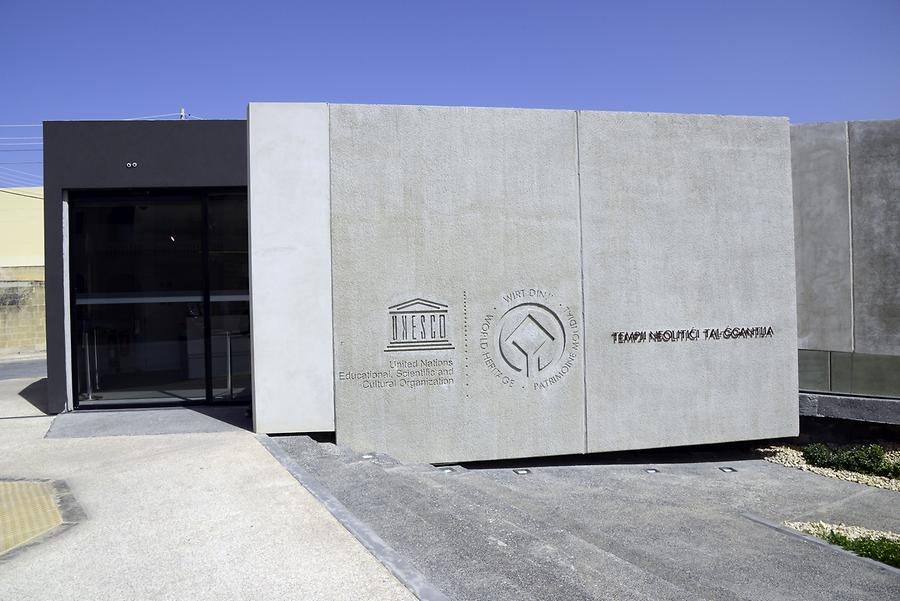Ggantija - Museum#

Ggantija - Museum, March 2016, © Gerhard Huber, under CC BY-NC 4.0 +Edu
A little bit inland lies Gozo's largest prehistoric attraction: the megalithic temple complex of Ggantija. A pompous museum forms the entrance to the world cultural heritage of the Ggantija temples. In view of the stone blocks weighing up to 57 tons, it is not surprising that the folk legend attributed the building of these temples to a family of giants. The cultic site of Ggantija is the second-oldest free-standing stone construction in history. It is surpassed only by the sensational discovery in Göbekli Tepe in Turkey, whose monumental complexes have a truly fabulous age: at 11,000 years, they are almost twice as old as the Maltese temples. Also in Ggantija, oracle priests practiced. Intoxicated, they made contact with gods and the deceased and announced their prophecies - with a blood-curdling thunder from the oracle holes.
Ein wenig landeinwärts liegt Gozos größte prähistorische Attraktion: die megalithische Tempelanlage von Ggantija. Ein pompöses Museum bildet den Eingang zum Weltkulturerbe der Ggantija Tempel. Angesichts der bis zu 57 t schweren Steinblöcke verwundert es nicht, dass die Volkssage den Bau der Tempeln einem Geschlecht von Riesen, den Giganten, zuschrieb. Die Kultstätte von Ggantija gilt als zweitälteste freistehende Steinkonstruktion der Geschichte. Übertroffen wird sie nur vom Sensationsfund im türkischen Göbekli Tepe, dessen monumentale Anlagen ein wahrhaft sagenhaftes Alter aufweisen: Mit 11.000 Jahren sind sie fast doppelt so alt wie die maltesischen Tempel. Auch in Ggantija praktizierten Orakelpriesterinnen. Im heiligen Rausch nahmen sie Kontakt mit Göttern und Verstorbenen auf und verkündeten ihre Weissagungen – mit gruselerregendem Donnerklang aus den Orakellöchern.